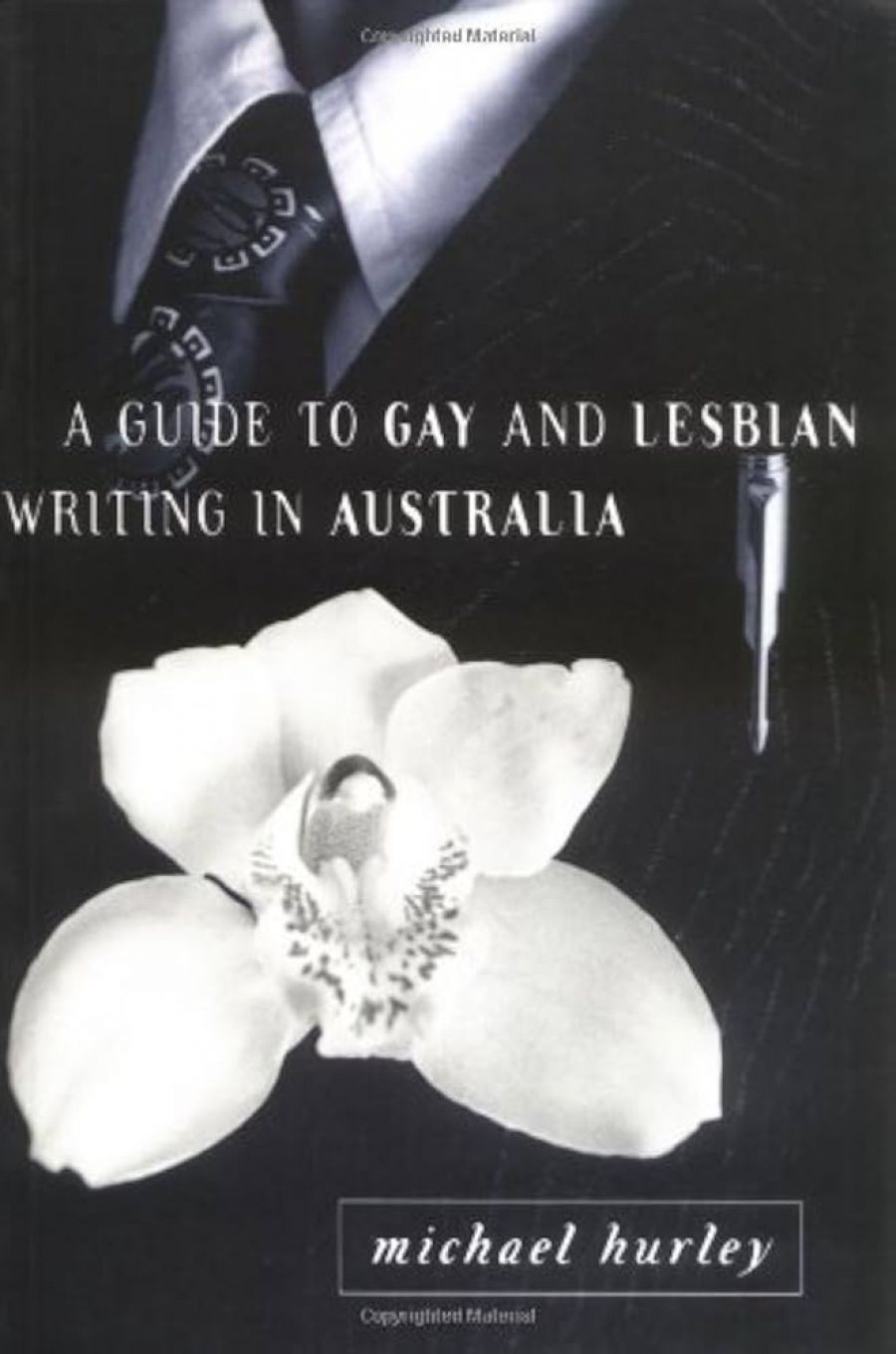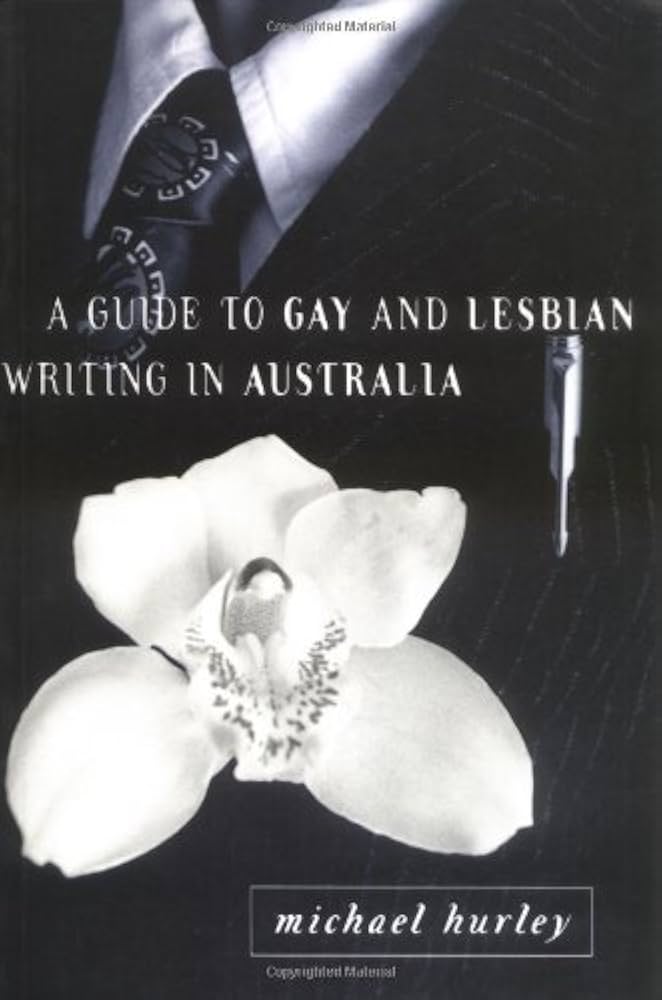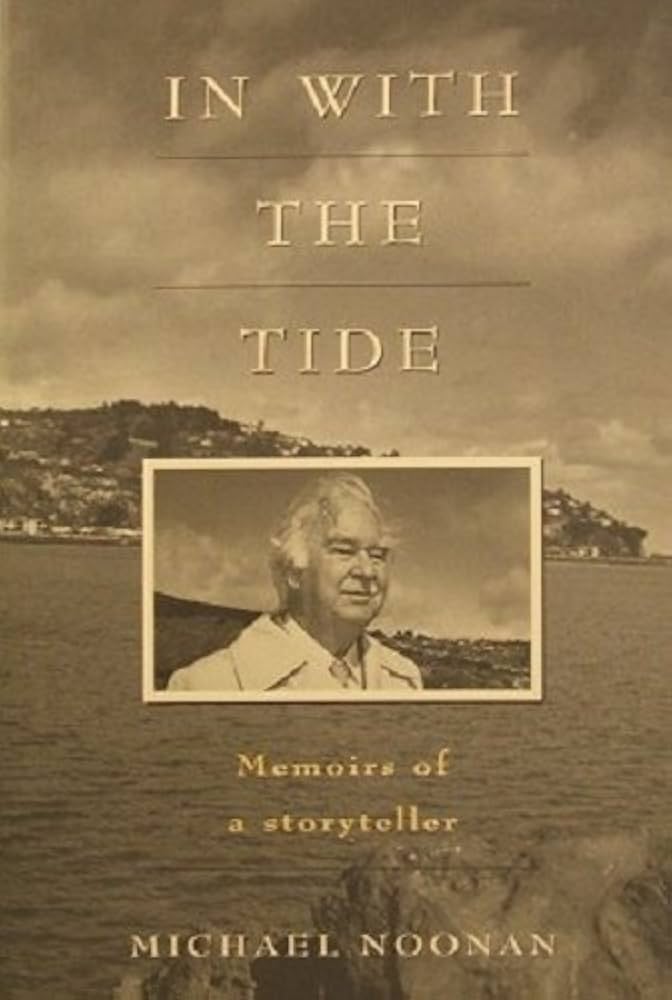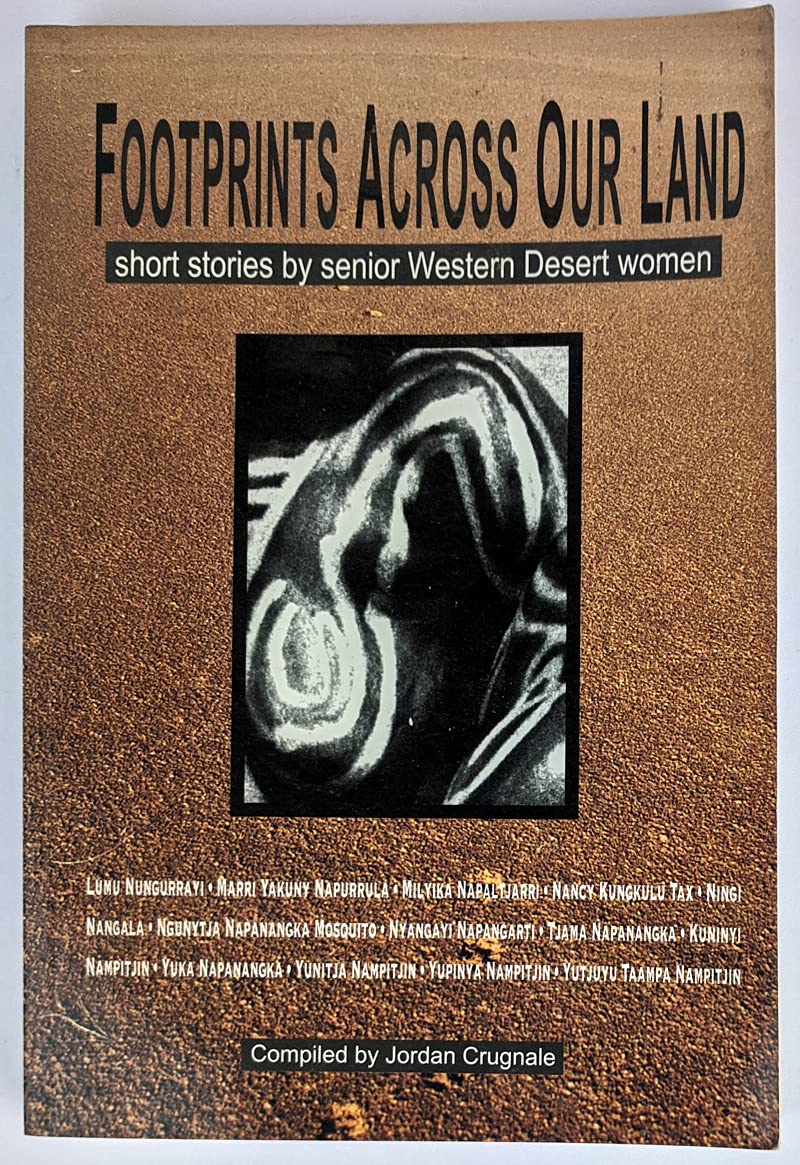
- Free Article: No
- Review Article: Yes
- Article Title: Shorts
- Online Only: No
- Custom Highlight Text:
The first national guide and only major reference work on gay, lesbian, queer and transgender writing has a tall order to fill. Thanks to Hurley’s practical and sophisticated direction the guide is geared to perform to a demanding audience of both specialist and general interest.
The dead-end problems of producing such a historically destined resource – to include or not to include – are skilfully manoeuvred. Hurley’s introduction acknowledges the limits of such a publication while ushering us into the creative research possibilities of a guide which balances the importance of its inaugural mission with a healthy open-ended approach to the history it is making.
- Book 1 Title: A Guide to Gay and Lesbian Writing in Australia
- Book 1 Biblio: Allen & Unwin, $29.95 pb, 298 pp
- Book 1 Cover Small (400 x 600):

- Book 1 Cover (800 x 1200):

- Book 2 Title: In With The Tide
- Book 2 Subtitle: Memoirs of a Storyteller
- Book 2 Biblio: UQP, $24.95 pb, 300 pp
- Book 2 Cover Small (400 x 600):

- Book 2 Cover (800 x 1200):

- Book 3 Title: Footprints Across Our Land
- Book 3 Subtitle: Short Stories by Senior Western Desert Women
- Book 3 Biblio: Magabala Books, $29.95 pb, 201 pp
- Book 3 Cover Small (400 x 600):

- Book 3 Cover (800 x 1200):

For the most part Hurley avoids a clinical and authorial tone, implementing a non-evaluative and broad understanding of ‘writing’ which includes literature, theatre, film, poetry, journalism, theory and policy. Amongst the subjects covered in over 1000 entries are major and marginal writers, theoretical concepts, seminal publications and events. They are all understood as fluid categories, elaborated and positioned by cross referencing, and detailed bibliographies.
The guide’s flexible infrastructure builds a user-friendly, forward-looking monument to gay and lesbian writing which welcomes contestation rather than consensus over historical notions of sexual identity and representation. Sure, Hurley’s leading hand is felt at times ... big deal, the point is his gestures avoid being preachy, simplistic or boring.
Combining serious scholarship with an energetic style, the guide offers the complexity of a critical history with the quick-fix practicality of a Who’s Who via some shining anecdotes. Michael Hurley’s guide is a new key to sexual and cultural close already unlocked though previously unsatisfactorily documented.
Michael Noonan has led a fortunate life. He escaped the temptation of a Franciscan Monastery, the hardship of active service in New Guinea during World War II and years later a rare form of TB. However, his memoirs focus on his greatest achievement – ‘surviving for over fifty years on the products of my imagination and two index fingers’. Not surprisingly, Noonan begins his recollections looking back like Pip in Charles Dickens’ Great Expectations. What follows is a fascinating succession of Dickensian ‘one memorable day’ which paint a portrait of a writer straddling high and low, literary and commercial spheres of writing. From his earlier conflicting expectations to later great successes as a radio, television and fiction writer, Noonan’s memoirs are a homage to writing as an everyday craft with extraordinary pleasures.
Though the book is subtitled ‘Memoirs of a Storyteller’, and packed with tantalising anecdotes, several stories remain untold. Noonan’s relationship with his soul mate’, Anne, the Merle Oberon look-alike and wife of his Uncle Bill Moloney, and the memories of his enigmatic mother intriguingly skirt his otherwise ordered life. By being so short on sentimentality, the book ends up a bit long on dry facts, especially in the overindulgent space given to reviews of his own work. However, the memoirs are a treasure-chest for Australian media, literary and social historians or fans. Noonan provides vital histories of forgotten cultural eras – the hectic world of live radio in the ‘poor man’s Hollywood’ of post-World War II Sydney, the vagaries of life as an unpublished writer in pre-literary grant times and the pioneering efforts of exploring television’s new frontiers.
Several connecting layers – text, colour and black and white photographs, paintings, glossary and maps – make up this collection of short stories by senior Western Desert women. Though the stories are the focus their meanings are bound neither by their oral origin or their written translations. Photography, painting and text do not capture but provide vital expressions of the women’s transforming cultural history and experience. The book is a beginning in a complex but determined effort initiated by senior Western Desert women to share the oral tradition of Aboriginal culture, knowledge and experience. Their stories evoke the rhythms of everyday life – hunting, walking, cooking, eating, family gathering, and storytelling – which develop a complex sense of place, belonging, memory and culture. The subjects range from working as a ‘cookie’ on the epic seven-to-eight-month long Canning Stock Route, encounters with kartiya (white people) in the 1930s and 1940s, the abundance of desert bushtucker and ‘women’s business’ such as giving birth. All give voice to experience which does not finalise forever but which echoes with the potential for more stories.
The last photograph provides an analogy for the book’s perspective. It features two Aborigines – a male looking ahead at a female-with their backs to us looking away. This collection allows us to look over the shoulder of our usual views of Aboriginal culture to gain a partial but important perspective on what the Aboriginal woman sees. We don’t get her whole picture but it’s a beginning which testifies to Aboriginal women’s culture as a dynamic and relevant force.


Comments powered by CComment